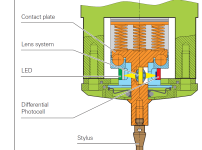ballen
Diamond
- Joined
- Sep 25, 2011
- Location
- Garbsen, Germany
I assume that these are Micro-Electro-Mechanical Systems (MEMS) sensors integrated on a chip. The last time I looked at these, a year or two ago, the best once could do, with lots of integration/averaging, was a few arcseconds of precision. You could make the resolution finer but it would not repeat.Here is what my colleagues did with ready-made chips from the store:
Perhaps the integrated devices have improved. Could you tell us which chips your colleagues are using?







